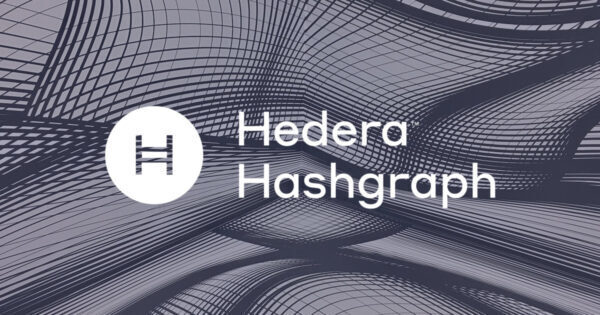Hedera Hashgraph is an exceptional advancement in Distributed Ledger Technology (DLT). In the domain of decentralized networks, it embodies the characteristics of increased speed, enhanced security, and unwavering impartiality, going beyond the traditional blockchain. This innovative DLT model employs a graph-like data structure called a hashgraph, which is substantially more scalable and efficient than a blockchain. Hedera’s widespread adoption in various industries is a potent demonstration of its technological prowess, indicating a fundamental change in our approach to DLT.
Lets explore the complexities of the Hedera Hashgraph protocol, providing a comprehensive analysis of its distinctive architecture, consensus mechanism, and advanced cryptographic algorithms. It seeks to illuminate the fundamental principles underlying Hedera’s outstanding performance and its promise of a truly decentralized and secure digital future. It describes the various real-world applications of Hedera and provides insights into how this revolutionary technology is transforming numerous industries.
Hedera’s evolution is directed by the Hedera Governing Council, an esteemed group of internationally renowned businesses and institutions. The Council plays a crucial role in directing Hedera’s course, providing essential strategic supervision and governance to preserve the platform’s robustness and integrity. This ensures that Hedera’s development is consistent with decentralization principles, thereby promoting diversity, equity, and inclusion.
Hedera’s innovative protocol and Hedera Governing Council’s strategic position in orchestrating the DLT revolution. By comprehending Hedera Hashgraph’s ground-breaking technology and how it is governed, we can appreciate the vast array of opportunities it affords our increasingly digital and interconnected world.
Table of Contents

A Detailed Protocol Breakdown
Hashgraph proposed an inventive DLT protocol that substitutes a graph-like structure for a conventional blockchain. This novel technique, the hashgraph consensus algorithm, provides superior speed, security, and impartiality.
Hedera’s unique hashgraph algorithm can handle thousands of transactions per second (TPS). This speed significantly exceeds the capacity of conventional blockchains by enabling the simultaneous processing of transactions, resulting in an asynchronous Byzantine Fault-Tolerant (ABFT) system, the gold standard for distributed computing security.
Through the use of cryptographic hashing, Hedera Hashgraph provides a high level of security. Each consensus protocol node maintains a copy of the hashgraph, which contributes to the system’s transparency and resistance to censorship and manipulation.
The Hedera consensus mechanism ensures impartiality by establishing the order of transactions through cryptographic timestamping. This method prevents any one node from exerting undue influence over the transaction order, ensuring that all users have equal opportunities.
The Hedera Governing Council, a group of up to 39 multinational businesses and organizations, oversees the Hedera Hashgraph protocol. This distributed governance model strengthens the decentralization of the system, ensuring that no single entity can assert control and thereby ensuring long-term stability and continuous growth.
Hedera Hashgraph Use Cases
Hedera’s superior TPS and secure architecture make it a formidable competitor in the financial services industry. It enables peer-to-peer payments and manages real-time post-trade processing in the capital markets. This is an attractive solution for stock issuances, lending platforms, and real-time gross settlement systems.
Hedera’s supply chain transparency enables real-time tracking of products from source to consumer, creating an immutable and secure transaction record. This function improves accountability, combats fraud, and optimizes logistics management in the supply chains of diverse industries such as agriculture, manufacturing, and pharmaceuticals.
The ability of hederas to securely manage patient records and provide immediate access to healthcare professionals is revolutionary in the healthcare industry. This can enhance pharmaceutical traceability by ensuring drug authenticity, thereby enhancing patient safety and discouraging forgery. This can facilitate the exchange of health data, promote clinical research, and expedite insurance claim processing.
Hedera Hashgraph can revolutionize the gaming industry by empowering developers to construct fair, transparent, and efficient in-game transactions and player-reward systems. Its capacity to efficiently and securely administer high-volume microtransactions can facilitate the implementation of blockchain-based games and non-fungible tokens (NFTs).
Hedera’s DLT can provide a secure, tamper-proof infrastructure for digital identity verification. It has the potential to revolutionize the administration of personal information in the digital world, providing robust protection against identity theft and fraud. Its potential includes the establishment of self-sovereign identities, the protection of biometric data, and the simplification of KYC procedures.
Internet of Things (IoT): Hedera is ideally suited for IoT applications due to its proficiency in handling high-volume transactions. It can facilitate transactions between machines (M2M).
Hedera Hashgraph’s high throughput makes it an ideal solution for Internet of Things (IoT) applications. It can facilitate machine-to-machine (M2M) transactions, monitor and manage smart devices in real time, and verify the authenticity of the device. Establishing reliable device identities, enhancing data security, and promoting M2M microtransactions could revolutionize everything from smart home systems to industrial IoT.
Media and Entertainment: Due to Hedera’s decentralized, transparent, and immutable nature, the media and entertainment industries will undergo a significant transformation. It offers solutions for digital rights management, proof of presence, royalty payment monitoring, and digital content monetization. Hedera could facilitate the development of decentralized social networks and streaming platforms that protect user privacy and compensate content creators more equitably.

Hedera can redefine public services by offering solutions for public records, voting systems, and land registries in the public sector. Hedera could reduce corruption, streamline processes, and increase citizen engagement by ensuring transparency and traceability. This alternative to blockchain technology could also facilitate a secure and efficient infrastructure for central bank-issued digital currencies (CBDCs).
Hedera can establish decentralized energy markets, enabling peer-to-peer energy trading in real time and enhancing grid management. It could promote energy generation, consumption, and pricing transparency, paving the way for a more sustainable and decentralized energy future.
Hedera represents an enormous step forward in the evolution of DLT. Its innovative structure and consensus algorithm offer greater speed, security, and fairness than those of conventional blockchain systems. Its diverse use cases, developed under the guidance of the Hedera Council, demonstrate its potential to revolutionize a variety of industries, heralding a new era in the DLT landscape.
The sturdiness of Hashgraph’s technology affords enormous opportunities for developers and businesses seeking to create scalable, secure, and efficient applications. Its practical application in numerous domains demonstrates its adaptability and utility.
The Hedera Governing Council is indispensable for providing stability, guiding future development, and preserving the platform’s decentralized nature. As we continue to observe the growth and evolution of Hedera Hashgraph, its capacity to drive technological innovation, empower business solutions, and democratize digital interactions has become increasingly apparent.




